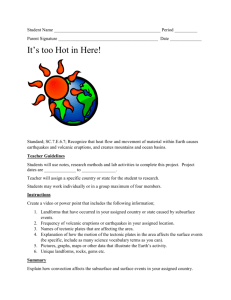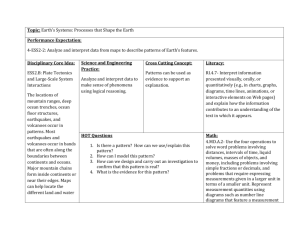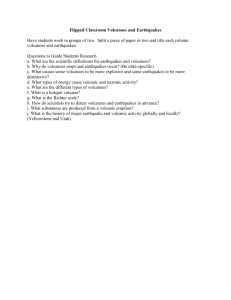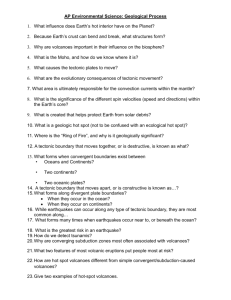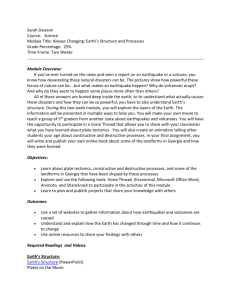Chapter 14
advertisement
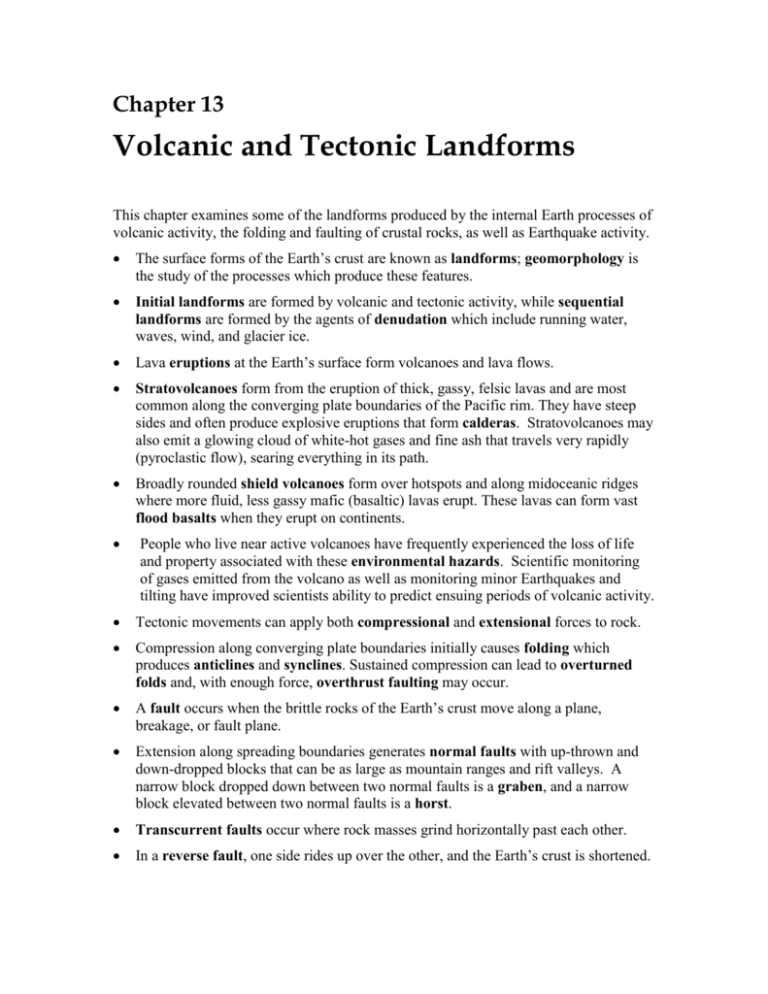
Chapter 13 Volcanic and Tectonic Landforms This chapter examines some of the landforms produced by the internal Earth processes of volcanic activity, the folding and faulting of crustal rocks, as well as Earthquake activity. The surface forms of the Earth’s crust are known as landforms; geomorphology is the study of the processes which produce these features. Initial landforms are formed by volcanic and tectonic activity, while sequential landforms are formed by the agents of denudation which include running water, waves, wind, and glacier ice. Lava eruptions at the Earth’s surface form volcanoes and lava flows. Stratovolcanoes form from the eruption of thick, gassy, felsic lavas and are most common along the converging plate boundaries of the Pacific rim. They have steep sides and often produce explosive eruptions that form calderas. Stratovolcanoes may also emit a glowing cloud of white-hot gases and fine ash that travels very rapidly (pyroclastic flow), searing everything in its path. Broadly rounded shield volcanoes form over hotspots and along midoceanic ridges where more fluid, less gassy mafic (basaltic) lavas erupt. These lavas can form vast flood basalts when they erupt on continents. People who live near active volcanoes have frequently experienced the loss of life and property associated with these environmental hazards. Scientific monitoring of gases emitted from the volcano as well as monitoring minor Earthquakes and tilting have improved scientists ability to predict ensuing periods of volcanic activity. Tectonic movements can apply both compressional and extensional forces to rock. Compression along converging plate boundaries initially causes folding which produces anticlines and synclines. Sustained compression can lead to overturned folds and, with enough force, overthrust faulting may occur. A fault occurs when the brittle rocks of the Earth’s crust move along a plane, breakage, or fault plane. Extension along spreading boundaries generates normal faults with up-thrown and down-dropped blocks that can be as large as mountain ranges and rift valleys. A narrow block dropped down between two normal faults is a graben, and a narrow block elevated between two normal faults is a horst. Transcurrent faults occur where rock masses grind horizontally past each other. In a reverse fault, one side rides up over the other, and the Earth’s crust is shortened. Earthquakes occur when tectonic forces cause rock to suddenly fracture and move, shaking the ground in the vicinity of the fracture Submarine Earthquakes can produce a sea wave known as a tsunami. The Richter scale is a logarithmic scale used to measure the energy released by an Earthquake. Most severe Earthquakes occur along lithospheric plate boundaries.
